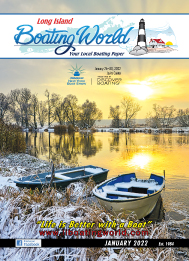
Marine Environmental Protection … 10 Ways We Can Protect Our Marine Environment … In the United States the Coast Guard develops and enforces regulations to avert …1 … The introduction of invasive species into the maritime environment … 2 … stopping unauthorized ocean dumping, and …3… preventing oil and chemical spills. This work is conducted through the Marine Environmental Protection program … What are Aquatic Invasive Species … These are plants, animals, and other organisms that are not native to our nation’s waterways. These vulnerable waterways include our oceans, lakes, ponds, rivers, streams and creeks. In order for invasive species to survive, the invaded habitat needs to be covered with water throughout most of the year. Invasive Plants … These include algae, floating plants, bottom plants, and plants that have roots that extend into the bottom of a lake, or pond. Some invasive plants also emerge with blossoms above the surface. Invasive Animals … These include a wide variety of fish, reptiles, mollusks, and insects. In addition; molds, fungi, bacteria, viruses and other disease-causing organisms also can survive in the water and spread to the extent that they become invasive. The danger posed by invasive species is that the invaded habitats lack local predators that can attack the invaders! Invaded Waterway Causes and Vulnerabilities … 4 … Throughout the world, rivers, lakes, oceans and ponds are being threatened by the ever increasing development of coastal waters. In addition to destroying large areas of natural coastal shorelines, invasive development damages coastal waters though the addition of environmentally harmful pollutants emanating from commercial ships, runoff from land based sources of pollution, and other marine environment threats.
Land-Based Pollution … 5 … This originates from sources, that include industrial and agricultural waste, wastewater, and storm run-off. Once collected/released, these invasive pollutants are transported by gravity down the hills, across valleys and into lakes, streams, and rivers that are integrated throughout many marine environments. These multiple sources of maritime pollution can travel for many miles and branch into multiple bodies of water that are far away from the pollutant’s origin. Ultimately they spread throughout coastal and inland waters which include some of the most productive marine environments in the world. Fortunately, many developed nations are supporting the EPA’s efforts to bring these aforementioned maritime threats into a managed structure. This helps to ensure threats are being mitigated. Marine Litter … Mostly plastic, this is one of the biggest threats to the maritime environment. It is a significant threat to fish, and marine animals alike. Each year fish and marine mammals of all types ingest plastic waste that has been released into our oceans and other bodies water globally. The result is at that far too many marine animals are dyeing because of suffocation caused by the ingestion of plastic wastes that fill stomachs with undigestible plastic litter. Tackling Marine Litter … 6 … The EPA and others are actively working to get water borne plastic trash under control. This maritime threat is said to account for up to 80% of all marine trash. It has been estimated that the ocean will contain one ton of plastic for every three tons of fish by 2025. That is an eye opening amount. Currently 80% of marine litter worldwide comes from land-based sources; with the remaining 20% coming from ocean-based sources such as disregarded or lost fishing gear. The Role Recreational Boaters Can Play … 7 … If you enjoy any kind of water based activity, part of this recreation could be targeted at helping to prevent the spread of aquatic invasive species. Whether you are a boater, fisherman, paddle craft owner, or seaplane owner you have a very important role you can play by helping to keep your aquatic environment healthy, and reporting marine pollution when you see it … 8 … Did you know the main way aquatic invasive species spread is by hitching a ride on your boat’s bottom and submerged parts of trailers. Similarly, other aquatic plants and animals are introduced into lakes and streams through accidental and sometimes intentional pet releases. In addition, invasive plant species such as zebra mussels, water hyacinth, and Brazilian water weed pose serious harm to local water systems, dams, hydro-electric facilities, farms, boats and the aquatic ecosystem as a whole. Best Practices to Protect the Maritime Environment in Your Hometown … 9 … Use less water in areas that can produce wastewater that flows into the marine environments … Reduce plastic waste … Repair oil or fuel leaks …. Fish responsibly … Help protect the marine environments in your area … Use Fewer Plastic Products. … Help take care of the beaches … Avoid using items that exploit marine life … 10 … Be an ocean-friendly pet owner … Work to protect all bodies of water, and to restore the creaks, streams, rivers, ponds, lakes and oceans near you … Remember Safe Boating is Smart Boating !!
